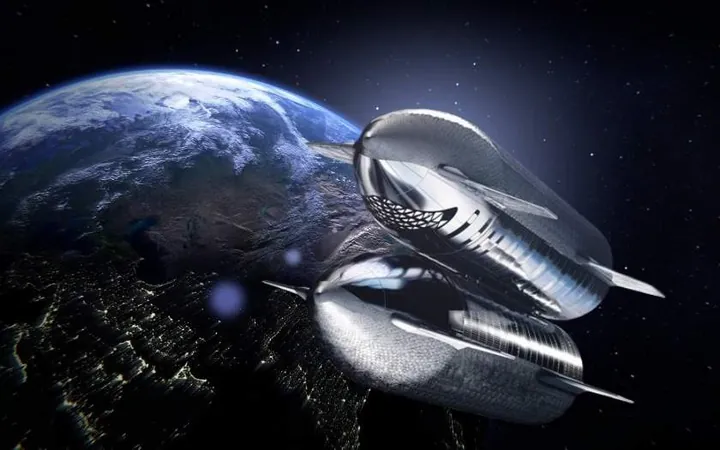
Are We Ready for Life on the Moon and Mars? Here’s the Shocking Truth!
2025-06-04
Author: Daniel
Human Bodies vs. Space: The Ultimate Battle
Let’s face it: our bodies are not made for the harsh realities of space travel. As we prepare for missions to the Moon and Mars, we must urgently understand how factors like radiation, microgravity, and extreme temperatures wreak havoc on our cells and tissues.
The Terrifying Effects of Space Radiation
Radiation is a formidable foe, capable of leading to DNA mutations, cataracts, and even cancer. The European Space Agency warns that astronauts on a Mars mission would be exposed to radiation in just one day equivalent to an entire year on Earth! This shocking statistic underscores the urgent need for effective countermeasures.
Bone Density and Beyond: The Risks of Weightlessness
Living in a weightless environment isn’t just disorienting; it comes with serious risks. Astronauts can lose about 1% of their bone mineral density every month due to prolonged exposure to microgravity. This heightened fracture risk, coupled with fluid shifts that can impair vision and kidney function, poses significant challenges for those venturing into deep space.
Medical Care in a Space Emergency: A Race Against Time
Imagine you're millions of miles from Earth and facing a medical emergency. Communication delays of up to 20 minutes could mean the difference between life and death! To combat this, scientists are working on AI-driven systems that can diagnose health issues and offer immediate assistance, but these technologies must be flawless and durable enough to survive space conditions.
The Medication Dilemma: Can We Trust Our Supplies?
On the International Space Station (ISS), astronauts typically juggle four different medications weekly, but the problem is that most drugs have a shelf life of less than three years. For a mission to Mars, up to 98% of medication could expire before the crew returns! Plus, the unique environment of space can alter the chemical composition and effectiveness of these drugs—leading to repeated doses of medication in nearly 20% of cases!
Mental Health in Space: The Psychological Battleground
The stress of isolation, limited interaction, constant noise, and disrupted sleep can take a toll on an astronaut’s mental health. To combat this, innovative technologies like lighting systems that regulate circadian rhythms and virtual reality stress management tools are in development. These methods are being tested in ground-based missions, preparing for the challenges of lunar and Martian exploration.
Feeding the Future: Grow Your Own on Mars?
Simply bringing food supplies won’t cut it for long missions to Mars, especially with travel times stretching up to 10 months! The extreme temperatures and radiation on both the Moon and Mars limit traditional farming possibilities. To tackle this, NASA and the Canadian Space Agency have launched the Deep Space Food Challenge, racing to develop autonomous systems capable of growing fruits and vegetables with minimal resources. Ongoing research is even looking into genetically modified microorganisms to produce vital nutrients in bioreactors.
The Final Countdown: Are We Really Ready for Space?
As we stand on the brink of interplanetary travel, the challenges we face are monumental. From radiation to medical emergencies, and from mental health issues to sustainable food sources, humanity must innovate rapidly. Are we truly ready to take the leap into the cosmos? Only time will tell!


 Brasil (PT)
Brasil (PT)
 Canada (EN)
Canada (EN)
 Chile (ES)
Chile (ES)
 Česko (CS)
Česko (CS)
 대한민국 (KO)
대한민국 (KO)
 España (ES)
España (ES)
 France (FR)
France (FR)
 Hong Kong (EN)
Hong Kong (EN)
 Italia (IT)
Italia (IT)
 日本 (JA)
日本 (JA)
 Magyarország (HU)
Magyarország (HU)
 Norge (NO)
Norge (NO)
 Polska (PL)
Polska (PL)
 Schweiz (DE)
Schweiz (DE)
 Singapore (EN)
Singapore (EN)
 Sverige (SV)
Sverige (SV)
 Suomi (FI)
Suomi (FI)
 Türkiye (TR)
Türkiye (TR)
 الإمارات العربية المتحدة (AR)
الإمارات العربية المتحدة (AR)